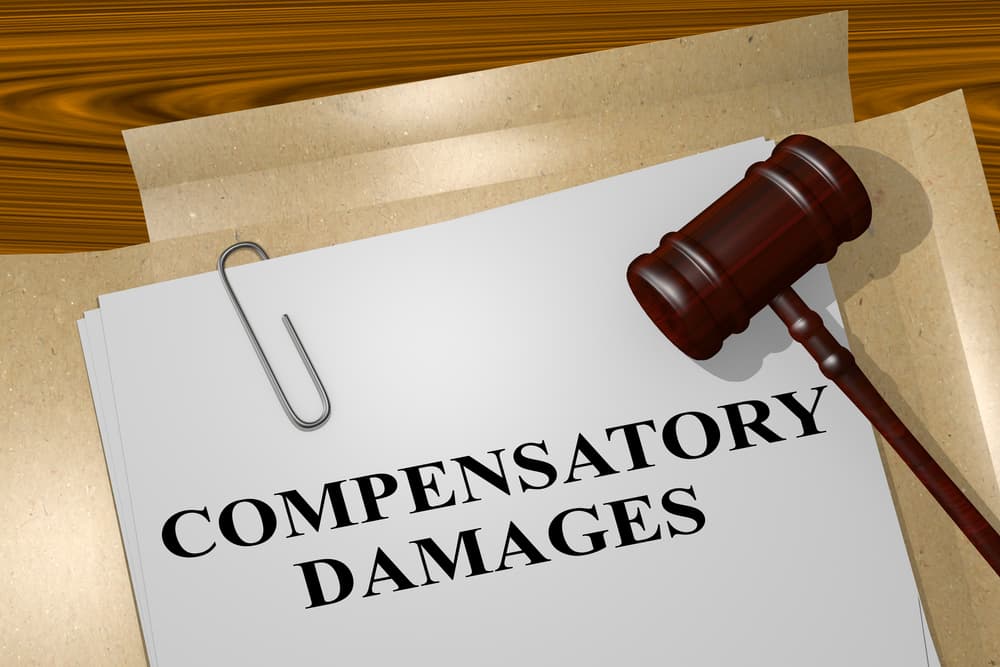When you suffer an injury due to someone else's negligence or intentional wrongdoing, you may be entitled to recover various types of damages, including compensatory damages and, in certain cases, punitive damages.
Punitive damages are a unique and often misunderstood aspect of personal injury law in Texas. As an injured victim, a personal injury lawyer can explain the role of punitive damages, how to determine them, and the process of filing a claim for this type of compensation.
In this comprehensive guide, we will explore the ins and outs of punitive damages in Texas personal injury cases, providing you with the knowledge and tools to make informed decisions about your legal options.
What Are Punitive Damages and When Are They Awarded?

Punitive damages, also known as exemplary damages, are monetary awards beyond compensating the victim for their actual losses. Punitive damages punish the defendant for particularly egregious, malicious, or reckless conduct, and to deter similar behavior.
Unlike compensatory damages, which make the victim whole, punitive damages do not relate to the victim's actual losses. Instead, the court bases them on the defendant's reprehensible actions and the need to send a strong message that society will not tolerate such behavior.
Courts do not award punitive damages in every personal injury case. They reserve them for situations involving a defendant's particularly outrageous conduct, such as in cases involving:
- Intentional torts (e.g., assault, battery, or intentional infliction of emotional distress)
- Gross negligence (e.g., reckless disregard for the safety of others)
- Fraud or misrepresentation
- Malice or willful and wanton conduct
To receive punitive damages in Texas, the plaintiff must prove by clear and convincing evidence the defendant's malicious, fraudulent, or grossly negligent conduct.
The Purpose of Punitive Damages in Personal Injury Cases
Punitive damages serve two primary purposes in personal injury cases:
- Punishment: Punitive damages punish the defendant’s egregious conduct.
- Deterrence: By imposing significant financial penalties, punitive damages deter the defendant and others from engaging in similar harmful conduct.
Punitive damages play a crucial role in the legal system. They hold wrongdoers accountable and provide an additional layer of protection for victims of serious misconduct.
Factors Considered When Determining the Amount of Punitive Damages
When a court or jury is tasked with determining the appropriate amount of punitive damages, they will consider:

- The nature and severity of the defendant's conduct: The more outrageous, malicious, or reckless the defendant's behavior, the higher the punitive damages.
- The degree of harm caused to the plaintiff: The greater the physical, emotional, or financial harm suffered by the victim, the higher the punitive damages.
- The defendant's wealth or financial resources: Punitive damages are intended to have a meaningful impact on the defendant, so the court may consider the defendant's net worth or ability to pay when setting the amount.
- The need for deterrence: The court may increase the punitive damages award if a larger penalty is necessary to effectively deter the defendant and others from engaging in similar misconduct.
- The plaintiff's own conduct: If the plaintiff's own actions contributed to the incident or failed to mitigate the damages, the court may reduce the punitive damages award accordingly.
- Any prior misconduct by the defendant: Evidence of a history of similar wrongdoing by the defendant may result in a higher punitive damages award.
The court will carefully weigh these factors to determine the appropriate punitive damages amount, ensuring that it is reasonable and effective in achieving the goals of punishment and deterrence.
Limitations and Caps on Punitive Damages in Texas
While punitive damages can punish serious misconduct, Texas limits and caps these awards:
Statutory Cap:
Texas law generally caps punitive damages at the greater of:
- $200,000, or
- Twice the amount of economic damages plus an amount equal to any non-economic damages found by the jury, up to $750,000.
Exceptions to the Cap:
The statutory cap does not apply in certain cases, such as those involving:
- Intentional torts (e.g., assault, battery, or intentional infliction of emotional distress)
- Certain environmental violations
- Violations of the Texas Deceptive Trade Practices Act
Burden of Proof:
As mentioned earlier, the plaintiff must prove by clear and convincing evidence the defendant's malicious, fraudulent, or grossly negligent conduct to receive punitive damages.
Bifurcated Trials:
In Texas, courts award punitive damages in a separate trial phase, known as a bifurcated trial. This allows the court to consider the defendant's financial condition and other relevant factors without unduly influencing the jury during the liability and compensatory damages phases.
Understanding these limitations and caps on punitive damages is crucial when pursuing a personal injury claim in Texas, as it can affect the potential recovery and the overall legal strategy.
How to Calculate Punitive Damages in Texas Personal Injury Cases
As mentioned, punitive damages in Texas personal injury cases are subject to specific statutory guidelines and limitations.
Here's a general overview of the process:

- Determine the Plaintiff's Compensatory Damages: The starting point for calculating punitive damages is the compensatory damages awarded to the plaintiff. Compensatory damages are intended to cover the victim's actual losses, such as medical expenses, lost wages, and pain and suffering.
- Assess the Defendant's Conduct: The court or jury must then evaluate the nature and severity of the defendant's conduct, as well as any aggravating factors, to determine if punitive damages are warranted.
- Apply the Statutory Cap: If punitive damages are deemed appropriate, the court will then apply the statutory cap, which is the greater of $200,000 or twice the amount of economic damages plus an amount equal to any non-economic damages, up to a maximum of $750,000.
- Consider the Defendant's Wealth: The court may also consider the defendant's financial resources and net worth when setting the final punitive damages award, as the goal is to have a meaningful impact on the defendant.
It's important to note that the calculation of punitive damages can be complex and is often subject to significant debate and negotiation between the parties involved.
Working with an experienced personal injury attorney is crucial to ensure that your rights are protected and that you receive the maximum amount of compensation you are entitled to under the law.
The Role of the Jury in Determining Punitive Damages
In Texas personal injury cases, the decision to award punitive damages and the amount of those damages is typically left to the jury's discretion. The jury plays a crucial role in this process, as they are tasked with:
- Determining Liability: The jury must first find the defendant liable for the plaintiff's injuries, either through negligence, intentional misconduct, or another legal theory.
- Assessing the Defendant's Conduct: The jury must then evaluate the nature and severity of the defendant's conduct to determine if it was malicious, fraudulent, or grossly negligent, warranting punitive damages.
- Calculating the Appropriate Amount: If punitive damages are deemed appropriate, the jury must then determine the appropriate amount based on the factors discussed earlier, such as the degree of harm, the defendant's wealth, and the need for deterrence.
The court gives significant weight to the jury's decision on punitive damages, as the jury is considered the best-positioned to assess the specific circumstances of the case and the appropriate level of punishment and deterrence.
However, the court may still review the jury's decision to ensure that it is reasonable and within the statutory guidelines.
The Process of Filing a Claim for Punitive Damages in Texas
The process of filing a claim for punitive damages in a Texas personal injury case generally involves the following steps:
- Establish Liability: The first step is to establish the defendant's liability for the plaintiff's injuries, either through negligence, intentional misconduct, or another legal theory.
- Gather Evidence: The plaintiff must then gather evidence demonstrating the defendant's egregious, malicious, or grossly negligent conduct that warrants punitive damages. This may include witness testimony, documentary evidence, and expert analysis.
- Plead for Punitive Damages: In the plaintiff's initial complaint or petition, they must specifically request punitive damages and provide a detailed explanation of the grounds for such an award.
- Engage in Discovery: During the discovery phase, both parties will exchange information and evidence relevant to the punitive damages claim, including the defendant's financial resources and any history of similar misconduct.
- Prove the Case: At trial, the plaintiff must prove by clear and convincing evidence that the defendant's conduct was malicious, fraudulent, or grossly negligent, and that punitive damages are warranted.
- Argue the Amount: If the plaintiff successfully establishes the defendant's liability for punitive damages, the court or jury will then determine the appropriate amount based on the relevant factors.
Throughout this process, work closely with an experienced personal injury attorney who can navigate the complex legal requirements and ensure that your rights are protected.
The Importance of Hiring an Experienced Personal Injury Attorney in Punitive Damages Cases

Pursuing a claim for punitive damages in a Texas personal injury case can be a complex and challenging endeavor. It requires a deep understanding of the applicable laws, the ability to gather and present compelling evidence, and the negotiation skills to effectively advocate for your rights.
Hiring an experienced personal injury attorney is essential when seeking punitive damages. Your attorney will:
- Evaluate the Merits of Your Case: Your attorney will thoroughly review the details of your case to determine if punitive damages are a viable option based on the defendant's conduct and the applicable legal standards.
- Gather Necessary Evidence: Your attorney will work diligently to collect and organize the evidence to prove the defendant's malicious, fraudulent, or grossly negligent behavior.
- Navigate the Legal Process: Your attorney will handle all aspects of the legal process, from filing the initial claim to negotiating a settlement or presenting your case at trial.
- Calculate the Appropriate Damages: Your attorney will work to ensure that the punitive damages award is calculated correctly and in accordance with the statutory guidelines.
- Protect Your Rights: Throughout the process, your attorney will advocate for your best interests and protect your rights, even in the face of aggressive defense tactics.
Attempting to pursue a punitive damages claim without the guidance of an experienced personal injury lawyer can be risky and may result in a less favorable outcome.
A knowledgeable attorney can increase your chances of recovering the maximum compensation you are entitled to under the law.
What to Prove to Receive Punitive Damages
To be awarded punitive damages in a Texas personal injury case, the plaintiff must prove by clear and convincing evidence that the defendant's conduct was malicious, fraudulent, or grossly negligent.
This is a higher standard of proof than the "preponderance of the evidence" typically required for compensatory damages.
Specifically, the plaintiff must demonstrate that the defendant:
- Acted with Malice: The defendant must have acted with a specific intent to cause substantial harm to the plaintiff or with a conscious disregard for the safety and well-being of others.
- Engaged in Fraud: The defendant must have knowingly made false representations or concealed material facts to intentionally deceive the plaintiff and cause harm.
- Exhibited Gross Negligence: The defendant must have acted with an extreme degree of risk, of which the defendant was aware but proceeded with conscious indifference to the safety of others.
The plaintiff must present clear and convincing evidence, such as witness testimony, documentary proof, and expert analysis, to establish the defendant's egregious conduct and the justification for punitive damages.
What Other Damages Can Be Recovered?
In addition to punitive damages, plaintiffs in Texas personal injury cases may be entitled to recover various types of compensatory damages, including:

- Economic Damages: These can be easily quantified, such as medical expenses, lost wages, and property damage.
- Non-Economic Damages: These damages are more subjective and difficult to quantify, such as pain and suffering, emotional distress, and loss of consortium.
- Disfigurement and Disability: Damages may be awarded for permanent scarring, burns, or other forms of disfigurement, as well as for any resulting disabilities.
- Loss of Earning Capacity: If the plaintiff's injuries have impaired their ability to earn future income, they may be entitled to compensation for this loss.
- Funeral and Burial Expenses: In wrongful death cases, the plaintiff may recover the costs of the decedent's funeral and burial.
The specific types and amounts of damages that can be recovered will depend on the unique circumstances of your case and the severity of your injuries. Your personal injury attorney will work to ensure that you receive the full compensation you are entitled to under the law.
Schedule a Free Consultation With Our Legal Team
If egregious misconduct injured you, you may file a claim for punitive damages in a Texas personal injury case. Contact us today for your free consultation.
Our experienced personal injury attorneys will review the details of your case, advise you on your legal options, and fight tirelessly to ensure that you receive the maximum compensation you are entitled to under the law.